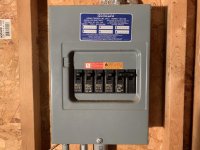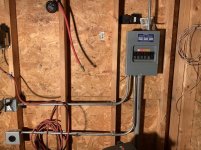PreciseHack
Plastic
- Joined
- Dec 18, 2016
- Location
- Iowa, USA
I bought a Wen Ding 150lb torque 220v power feed for my mill table off ebay. Right now I only have a single 50A 220v circuit in my shop. But I'm building a box on the back of the mill to house the VFD and other electronics, and I would like to get a secondary circuit breaker that is sized appropriately for the power feed so I don't overdraw and damage it. Any ideas how I can figure out the right amperage to choose? I checked the manual and other sources and I can't seem to find one that specifies the current draw for these.



